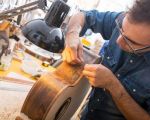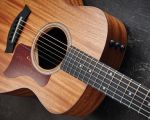How to Make Toy Musical Instruments: Fun and Creative DIY Projects for Kids
May 12, 2025
How to Make Toy Musical Instruments: Fun and Creative DIY Projects for Kids
Why Toy Musical Instruments Are Great for Kids
Toy musical instruments are a fantastic way to introduce children to the world of music and creativity. Not only do they provide an outlet for self-expression, but they also offer numerous developmental benefits. Whether it’s a small tambourine, a homemade drum, or a shaker made from recycled materials, these instruments help children explore rhythm, melody, and sound in a fun and interactive way.
Children learn through play, and musical instruments provide them with an opportunity to experiment with sound. This engagement stimulates cognitive, emotional, and physical growth, while also offering a way to develop motor skills and hand-eye coordination. For younger children, toy instruments like xylophones or maracas also help them explore patterns and understand cause and effect: "When I shake it, it makes a sound!" This can be a great way to engage kids and introduce them to the joy of making music.
The Benefits of Making DIY Musical Instruments
Making your own musical instruments can be a rewarding and educational experience for both kids and adults alike. Not only does it spark creativity, but it also offers numerous benefits that help in the overall development of children.
1. Fosters Creativity
When kids are involved in creating their own instruments, they have the opportunity to let their imagination run wild. They can choose their materials, think about what sounds they want to create, and design their instruments from scratch. This creative process not only results in a fun activity, but it also encourages kids to express themselves in new ways.
2. Enhances Fine Motor Skills
Creating DIY musical instruments involves a lot of hands-on activities that promote fine motor skills. Whether it's cutting, gluing, or assembling parts, children improve their dexterity and hand-eye coordination as they engage in these tasks. As they grip, hold, and manipulate materials, they are building the motor skills that will help them with writing, drawing, and other fine motor tasks later on.
3. Teaches Problem-Solving
Making musical instruments from scratch encourages kids to think critically and problem-solve. They may encounter obstacles in terms of materials or design, which requires them to come up with solutions. This process of trial and error can help them develop perseverance and creative thinking skills, which are valuable both in and out of the classroom.
4. Promotes Collaboration
Creating DIY musical instruments can be a fun group activity. Whether it's with siblings, friends, or classmates, working together to create an instrument encourages teamwork and collaboration. Kids learn to share ideas, divide tasks, and work toward a common goal. This not only fosters social skills but also teaches them how to communicate and cooperate with others.
Materials You Can Use to Make Musical Instruments
Making toy musical instruments doesn’t require expensive materials or fancy tools. Many simple objects around the house can be repurposed to create fun and functional instruments. Here are some materials you can use:
1. Recycled Items
Recycled items are perfect for making musical instruments. For example, old cans, jars, and cardboard tubes can be transformed into tambourines, maracas, or even drums. Not only does this keep waste out of landfills, but it also gives children an opportunity to learn about reusing and repurposing materials.
2. Household Items
Many common household items can be used to make music. Rubber bands stretched over boxes or containers can create makeshift guitars. Empty plastic bottles or containers filled with rice or beads can be turned into shakers or rattles. This shows kids that music can be made with simple, everyday objects.
3. Craft Supplies
Craft supplies like construction paper, glue, and paint can be used to decorate instruments, making them even more fun and personalized. Paintbrushes, markers, or stickers can be used to add vibrant colors and designs, which helps children develop their artistic skills as they create their instruments.
Easy-to-Make Musical Instruments for Kids
There are countless musical instruments you can create at home with minimal supplies. Here are a few simple ideas that are fun for kids to make and play with:
1. DIY Maracas
Making maracas is an easy and fun activity for kids. You can use empty plastic bottles or containers, filling them with rice, beans, or beads. Once filled, seal the top with tape and decorate the bottle with stickers, markers, or colorful paper. Shake the maracas to make different sounds, and explore how the filling changes the tone.
2. Paper Plate Tambourine
For a tambourine, simply use two paper plates, gluing them together with a little space between them. Fill the space with bells or small beads for added sound, then decorate the tambourine with paint or stickers. The result is a colorful and noisy instrument that’s perfect for little hands.
3. Cardboard Tube Drums
Take an empty cardboard tube and stretch a piece of fabric or wax paper over one end to create a drum. Secure it with a rubber band or tape, and decorate the outside of the tube with paint, stickers, or ribbon. Kids can use their hands or sticks to tap the drum and create beats.
Ideas for Fun and Creative Music Toys
Music toys don’t have to be just for play—they can be educational and enriching too. Here are some creative ideas for making music toys that both entertain and teach:
1. DIY Xylophone
Create a simple xylophone using wooden sticks or pencils and a set of empty glasses or bottles. Fill each glass with varying amounts of water to create different pitches. As kids tap the glasses with a stick, they’ll be able to explore basic musical concepts like pitch and tone.
2. Shaker Bottles with Different Sounds
Make a variety of shaker bottles with different fillings—beads, rice, pebbles, or pasta—and allow kids to explore how each material creates a different sound. This activity teaches about sound properties, rhythm, and the importance of experimentation in music.
3. Sensory Musical Box
Create a sensory musical box filled with items like small bells, rubber bands, and buttons attached to a box or piece of cardboard. Kids can move the items to create different sounds, helping them develop an understanding of sound while enhancing their sensory exploration.
Conclusion
Making toy musical instruments is an exciting and educational activity that encourages creativity, problem-solving, and musical exploration. By using simple household materials, you can create a variety of instruments that are not only fun to make but also fun to play. From maracas to drums and xylophones, these DIY instruments offer endless opportunities for children to engage with music and develop valuable skills.
Ready to get creative and make your own toy musical instruments? Gather your materials and start crafting today! For more fun ideas, visit our site and discover even more ways to bring music into your child’s life.








